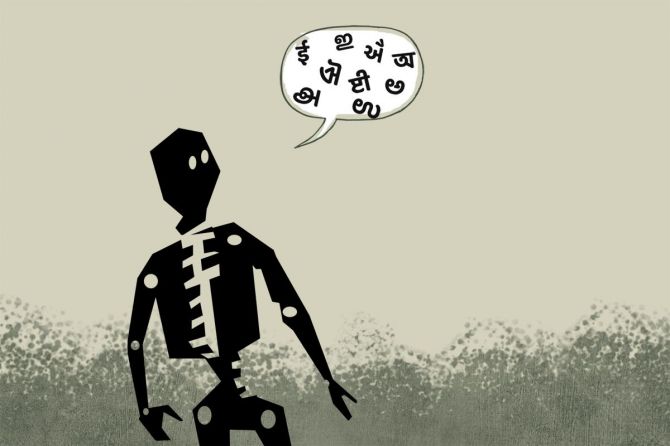Nearly 665 million Indians or 45 per cent of the rural population did not have access to the internet as of 2023.

Difficulty in understanding internet procedures, insufficient awareness of its benefits, and a lack of interest have emerged as the top reasons for a gap in internet penetration in rural India, according to a joint report by the Internet and Mobile Association of India (IAMAI) and Kantar.
“The proficiency of English in rural India is very low. While we have content in Hindi, the internet is English-heavy.
"That barrier needs to be broken by offering more of Indic or vernacular languages on the internet, or even pushing for more voice-based commands,” said Arnab Dutta, Group Account Director, B2B and Technology, Specialist Businesses, Insights, South Asia at Kantar, a marketing data and analytics company.
The report also shows that in the recent past, the use of the internet in Indian languages is increasing.
It shows that 57 per cent of internet users prefer to access the internet in Indian languages, with Hindi topping the chart.
A closer look at what is being consumed in the Indian language shows the need to address the issue of content in regional languages.
Among the top activities on the internet using Indian languages are watching videos, followed by listening to music, communication, social networking, online shopping and finally online searching.
One of the most important tools that has led to the increased use of Indian languages is voice search.
The issue though is that most of the time the results of voice searches on the internet end with a video rather than a website or an Indian language text search.
Experts opine that one of the barriers to accessing an Indian language is that even today for any regional content, the uniform resource locator (URL) of the website will be in English.
This, despite the fact that ICANN has made it possible for using URL in over 10 Indian languages.
 Raoul Nanavati, co-founder, Navana.ai, says that the Indian landscape, with its myriad languages and dialects, poses unique challenges to digital accessibility.
Raoul Nanavati, co-founder, Navana.ai, says that the Indian landscape, with its myriad languages and dialects, poses unique challenges to digital accessibility.
He believes that voice-based tools are what will drive the next 400 million onto the internet.
Navana.ai which recently unveiled ‘Bodhi’ its second generation multilingual voice AI model supports over 11 Indian languages.
The company which has developed the ‘Hello Ujjivan App’ for Ujjivan Small Finance Bank has seen 725,000 downloads.
Every month, 50,000 loans are being repaid using the Hello Ujjivan app, and 40,000 customers are giving consent to new loan requests.
The app also enables more than 30,000 fund transfers/ transactions every month. Customers are leveraging speech recognition in their local languages over 100,000 times per month.
Another fintech executive explained that in order to bridge the gap arising due to the dominance of English as a language on the internet, it is important to utilise the power of artificial intelligence (AI) to translate English into Indian languages.
“We should promote internet services using our home-grown Bhashini platform.
"It will enable accessibility of the internet in Indian languages which will further the agenda of digital inclusion. Using this and AI to our advantage here will become necessary in the future,” the executive said.
Bhashini operates as an AI-driven language translation system, breaking down language barriers and enabling conversations between speakers of different Indian languages.
The platform is accessible through dedicated Android and iOS apps.
Similarly, as the agenda for digital inclusion gains momentum across rural regions in the country, it will become important to ensure users know the benefits and end-use of the internet.
“By making the use of the internet more relevant to the end-user in (rural) regions is necessary to drive penetration.
"This may include activities from soil testing to digital payments, among others.
"Creating awareness with the help of government programmes about the relevance of the internet is important,” Dutta said.
He explained that in rural parts of the country, multiple users were using the same smartphone to access the internet.
“Sales in the Indian smartphone market have plateaued in the past two or three years.
"The new users are accessing the internet using somebody else’s mobile phone.
"There is a shared device usage in such cases, and thus it becomes difficult to access the internet if the phone does not belong to the user,” he added.
Close to 21 per cent of Indians in rural regions accessed the internet using somebody else’s device in 2023.
This number has gone up from 13 per cent in 2022, and 11 per cent in 2021, as per the report.
On the urban front, 14 per cent of Indians accessed the internet using somebody else’s device.
This number too has gone up from 10 per cent in 2022 and 5 per cent in 2021.
The need to solve the access issue for the new internet user is important, as the report shows that the top reason for not accessing the internet is because it is too difficult to understand and use.











